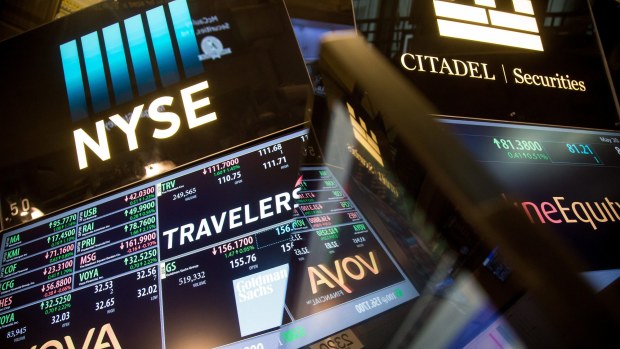Unloved stocks beat crowded trades

Investors on Wall Street following the herd and piling into "crowded trades" are getting burnt.
Contrarian fund managers putting their money to work in unloved stocks are outperforming.
A Bank of America Merrill Lynch study of active American fund managers shows that owning neglected stocks and selling popular shares has delivered far superior returns in recent years.

Owning neglected US stocks and selling popular shares has delivered far superior returns in recent years, Bank of America calculates. Michael Nagle
Selling the 10 most overweight stocks and buying the 10 most underweight shares held by active managers has delivered 9.5 percentage points of outperformance so far this year.
The strategy delivered 7.6 percentage points of alpha in 2015 and 41.7 percentage points of outperformance in 2014.
"As flows from active to passive strategies have accelerated, one quantitative factor that has worked unusually well for the last several years is a simple positioning trade: selling the 10 most overweight stocks and buying the 10 most underweight stocks by active managers," the report's chief author, Bank of America equity and quant strategist Savita Subramanian, said.
Oil price
Across global capital markets, several crowded trades have been evident in recent times.
Hedge funds have wagered big bets on inflation and interest rates remaining very low, the US dollar strengthening and the oil price remaining weak.
The surprise 75 per cent rebound in the price of Brent crude oil since it slumped below $US28 a barrel in January caught many asset managers off guard.

Active manager returns in most underweight and overweight stocks. Bank of America Merrill Lynch
History is littered with examples of crowded trades turning sour.
The dotcom bubble in the late 1990s was a classic crowded trade that hurt many investors when internet stocks crashed in 2000.
Last month after a surge in the iron ore price, Chinese regulators cracked down on rampant speculation by traders in commodity markets. The iron ore price has since fallen.
Consensus trades tend to perform well when market conditions are benign.

Crowded stocks have generally underperformed. Bank of America Merrilly Lynch
Liquidity risk
However, in turbulent market conditions crowded trades are exposed to liquidity risk as investors rush for the exit gates in unison.
In global share markets, Bernstein analyst Ann Larson found that crowded trades underperformed the least crowded trades by about 9.1 per cent in the past three months.
The ultra-low and negative interest rate environment around the world may have contributed to crowded trades.
High dividend paying stocks and high-growth FANG stocks (Facebook, Apple, Netflix and Google) have been among the favourites of active investors.
Bank of America calculates that Alphabet (Google's new parent company), Amazon, Boeing, Mastercard and Visa are among the most over-owned stocks by active managers.
Neglected US stocks include News Corporation, TECO Energy and Wynn Resorts.
Subscribe to gift this article
Gift 5 articles to anyone you choose each month when you subscribe.
Subscribe nowAlready a subscriber?
Latest In Markets
Fetching latest articles